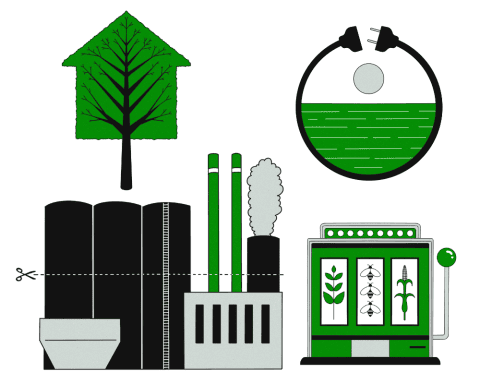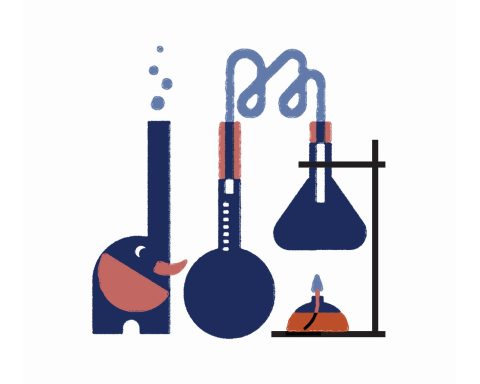Pakistan, a country whose contribution to greenhouse gas emissions is tiny by Canadian standards, knows the fury and the injustice of climate chaos. One-third of the country was flooded by an extreme monsoon season this summer that has directly affected more than 33 million people and killed more than 1,500 (as of early October), many of them children. The economy is devastated – more than a million homes lost, 5,000 kilometres of roads and thousands of bridges destroyed, 800,000 livestock killed or washed away, millions of acres of crop damage. The dollar seems a feeble metric for measuring the scale of the devastation, but the costs are in the tens of billions of dollars.
American conservationist David Brower ironically observed that “we are at war with nature, and we are winning.” The floods in Pakistan are one front in our clash with the planetary boundaries that define the rules for everything we do, but the war with nature will come to your doorstep soon.
Of course, there is no possibility of winning such a war, and UN Secretary General António Guterres has declared that “making peace with nature is the defining task of the 21st century and must be the top priority for everyone, everywhere.”
We know how to make that peace. The outlook would be bleaker if we did not know what needs to be done, or if what we needed to do was not also the path to renewed prosperity and economic justice.
The Corporate Knights Climate and Economic Renewal Plan describes a pathway to peace based on energy efficiency, electrification and expanding the supply of carbon-free energy. Some of its key components include:
• Retrofit, modernize and electrify most of the existing nine million residential and commercial buildings across Canada, with a priority on affordability for everyone.
• Rapidly expand the supply of renewable electricity and storage and increase inter-provincial grid connections.
• Increase electric vehicle market shares to 100% of light vehicles and 75% of trucks, with 10 million EVs on the road by 2030 and a fully built-out trans-Canada fast-charging infrastructure, supplemented by 2,000 kilometres of new bicycle rights-of-way and infrastructure support.
• Reduce the greenhouse gas emissions of steel and cement production by 50% or more by 2030.
• Support the economic conversion of Canada’s oil patch to a post-petroleum era by redeploying expertise and resources to growth sectors and high-value-added opportunities such as the burgeoning carbon fibre market.
• Increase the supply of critical minerals while exemplifying the social, ethical and environmental attributes of what mining must become in a sustainable economy.
• Convert 30% of agricultural land to low-till cultivation practices by 2030.
Compared with current climate-change-response spending in Canada of $15 to $25 billion per year, the Corporate Knights plan has capital requirements of $126 billion per year over the next critical decade. This aligns with other estimates that an effective emergency response to climate change will require investments in the order of 5 to 6% of GDP.
How this total is split between public and private sources of capital will depend on policy and will vary by sector, but the overall effort required is still within the range of our previous efforts to respond to existential threats and broken economies. A $126-billion-per-year investment plan for climate and economic renewal is certainly possible in Canada, an economy with an output of $2 trillion per year and capital investments of $450 billion per year, and whose government alone just spent $500 billion in an emergency response to the COVID pandemic.
Unlike most of the expenditures on COVID, many of the investments needed to respond to the climate emergency would not only pay for themselves but would position Canada for decades of economic prosperity. As the world ramps up its efforts to address the climate crisis in the 2020s, it will create a $9-trillion-per-year market for smart building solutions, electric vehicles and related batteries and infrastructure, renewable grid technology, critical minerals, sustainable biotechnologies, plant-based protein and other building blocks of the post-fossil economy.
Just as the successful economies of the 20th century were those that were able to capitalize on fossil fuels and combustion technologies, the successful economies of the 21st century will be those that have the technologies and know-how to operate within planetary boundaries.
As we have witnessed in Pakistan and countless other places in recent months, climate chaos is relentless, unforgiving and on the march. The status quo is no longer the safe option, and it hasn’t been for some time now. And in any case, as David Brower also once remarked, “I don’t think we were built to be safe; I think we were built to try things.”
Ralph Torrie is the research director at Corporate Knights.
Related post:
| These 6 green investments would kick-start Canada's economic renewal |
For more on the plan visit corporateknights.com/investmentplan.





